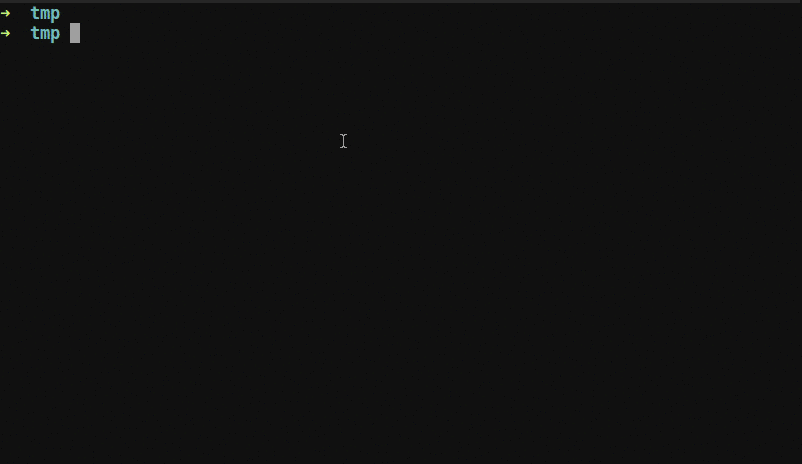Vim GDB front-end for neovim: https://github.com/huawenyu/neogdb.vim
The code reference: https://github.com/neovim/neovim/blob/master/contrib/gdb/neovim_gdb.vim
- gdb commands maps: next, step, finish, continue, etc.
- breakpoints:
- auto save/load,
- populate to local list: lopen
- side color sign
- triple state: enable -> disable -> delete
- toggle current line/toggle-all-breakpoints
- support condition set
- backtrace:
- populate to quickfix: copen
+-------------------------+--------------------------+
| | |
| | |
| | |
| | terminal> |
| Code c/c++ | (gdb) |
| | |
| | |
| | |
| | |
| +--------------------------+
| | |
+-------------------------+ backtrace |
| breakpoints | |
| | |
+-------------------------+--------------------------+
Press to toggle Nbgdb or Nbgdbattach.
:Nbgdb t1
So far, the attach call by sudo, so maybe we should input the sudo-password. The reason is:
gdb-attach-fails-with-ptrace-operation-not-permitted
:Nbgdbattach t1 <t1-pid>
:Nbgdbattach sysinit/init 10.1.1.125:444
The file structure should be clear, just copy the github.vim into ~/.vim/plugin/
Installing when using Vundle
Add the following line to the plugins regions of ~/.vimrc:
Plugin 'huawenyu/neogdb.vim'Installing when using Pathogen
cd ~/.vim/bundle
git clone git@github.com:solars/github-vim.git- :GdbLocal
- :GdbDebugStop
- :GdbToggleBreakpoint
- :GdbClearBreakpoints
- :GdbContinue
- :GdbNext
- :GdbStep
- :GdbFinish
- :GdbFrameUp
- :GdbFrameDown
- :GdbInterrupt
- :GdbEvalWord
- :GdbWatchWord
<F2>Helper Start<F4>continue<F5>next<F6>step<F7>finish<F8>util<F9>Normal-mode: breakpoints<F9>Select-Mode: print
There have a c file autoload/examples/t1.c in the plugin's dir.
Please copy it to your test dir.
### compile test
$ cd /dir/of/file/t1.c
$ gcc -g -O0 -o t1 t1.c
### start gdb
$ vi t1.c
If default keymap, <F2>, the command line show `:Nbgdb t1`, <Enter> to start gdb.Put these in your ~/.vimrc to customize the keymaps:
If define g:neobugger_leader, will ignore all g:gdb_keymap_... customized.
let g:neobugger_leader = ';'Then the keymaps will be g:neobugger_leader + <char>, the <char> like:
r: GdbRefreshc: GdbContinuen: GdbNexti: GdbStepN: GdbFinisht: GdbUntilb: GdbToggleBreaka: GdbToggleBreakAllC: GdbClearBreakx: GdbDebugStopk: GdbFrameUpj: GdbFrameDown
let g:gdb_keymap_continue = '<f8>'
let g:gdb_keymap_next = '<f10>'
let g:gdb_keymap_step = '<f11>'
" Usually, F23 is just Shift+F11
let g:gdb_keymap_finish = '<f23>'
let g:gdb_keymap_toggle_break = '<f9>'
" Usually, F33 is just Ctrl+F9
let g:gdb_keymap_toggle_break_all = '<f33>'
let g:gdb_keymap_frame_up = '<c-n>'
let g:gdb_keymap_frame_down = '<c-p>'
" Usually, F21 is just Shift+F9
let g:gdb_keymap_clear_break = '<f21>'
" Usually, F17 is just Shift+F5
let g:gdb_keymap_debug_stop = '<f17>'Current implement only support two kinds of windows: backtrace, breakpoint.
The default config is:
- local-mode, diable these windows
- attach-mode, open them
But we can modify the default bahaviour by config:
let g:neogdb_window = ['backtrace', 'breakpoint']The Nbgdbattach always use target remote to connect a real searver which is different in everyone's env.
So we can specific a local host by put these into .vimrc:
if exists("$NBG_ATTACH_REMOTE_STR")
let g:neogdb_attach_remote_str = $NBG_ATTACH_REMOTE_STR
else
let g:neogdb_attach_remote_str = 'sysinit/init 192.168.0.180:444'
endifOr define a env var NBG_ATTACH_REMOTE_STR by putting in .bashrc:
export NBG_ATTACH_REMOTE_STR="sysinit/init 192.168.0.180:444"By default, if you run Nbgdb or Nbgdbattach when GDB is already started,
the plugin will send an interrupt (<c-c>) followed by a start.
This is in order to speed up the edit-compile-test cycle.
If you instead want an error to be thrown when GDB is already started, change this variable:
let g:restart_app_if_gdb_running = 0By default, the plugin toggles the breakpoint right after pressing g:gdb_keymap_toggle_break.
If this flag is set to 1, the plugin will require you to confirm the command with Enter which lets you edit the command before issuing it:
let g:gdb_require_enter_after_toggling_breakpoint = 0To send your own commands to GDB:
" Prints the value of the variable under the cursor
nmap <Space>p :call neobugger#gdb#Send("print " . expand('<cword>'))<CR>You can run your own code when Neogdb sets its keymaps.
The plugin will call NeogdbvimNmapCallback on initialization and NeogdbvimUnmapCallback on exiting, if these functions exist.
For example, you can put this in your ~/.vimrc:
function! NeogdbvimNmapCallback()
" Let fzf.vim open files in the current window by default.
" This is so that, when navigating files,
" we don't switch to a new tab and thus *always* see the neogdb's splits.
let g:fzf_action = { 'enter': 'edit' }
endfunc
function! NeogdbvimUnmapCallback()
" Quitting to normal editing. Let fzf.vim open files in the new tab,
" as usual.
let g:fzf_action = { 'enter': 'tabnew' }
endfunc Plug 'huawenyu/vimlogger'
" Also append this line to your ~/.vimrc to start our logfile
silent! call logger#init('ALL', ['/tmp/vim.log'])
- Start vim
- Using another terminal, off couse it's easy if you using
tmuxwhich you'll not regret to meet the tools. watching the log bytail -f /tmp/vim.log
Vim license, see LICENSE
